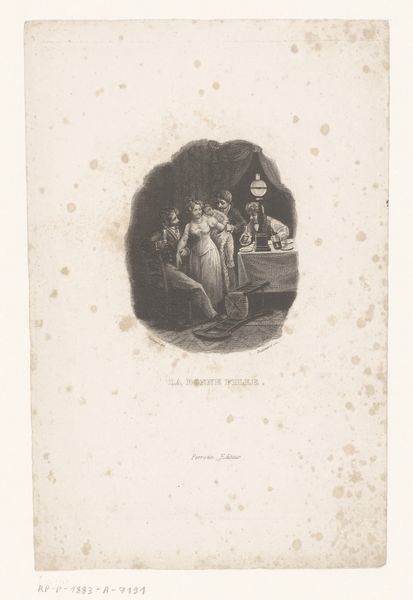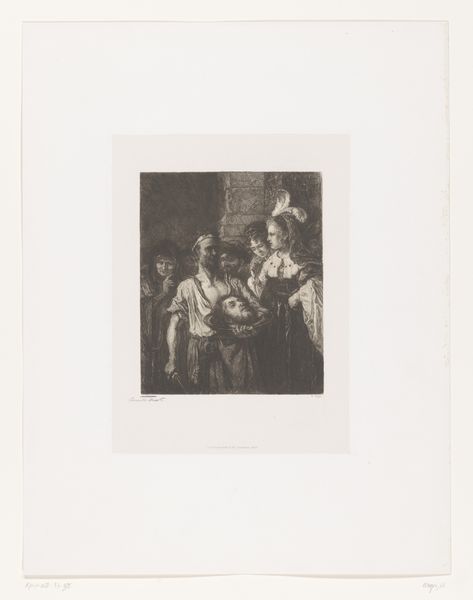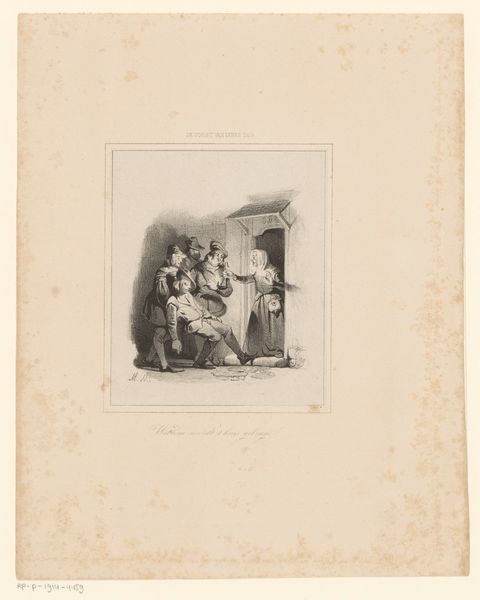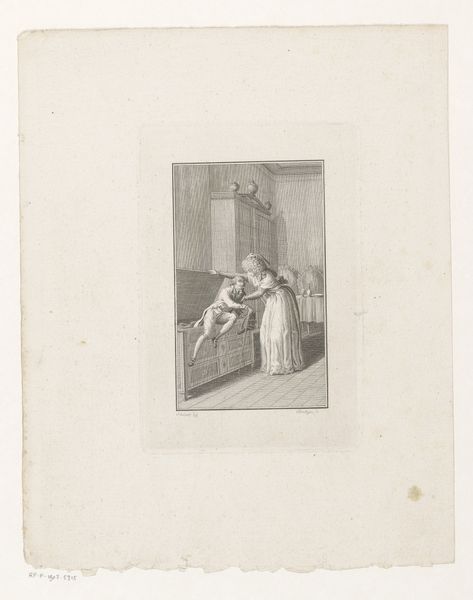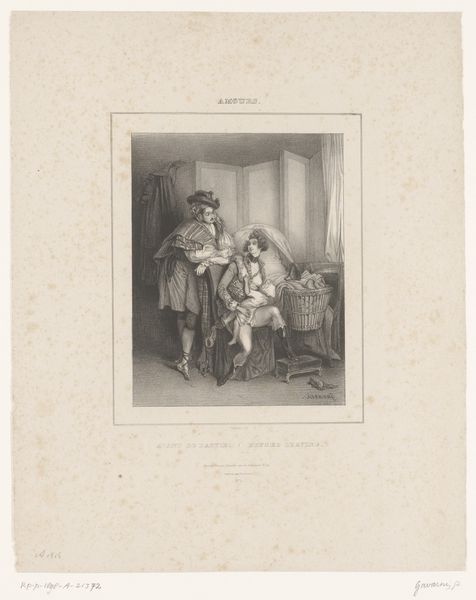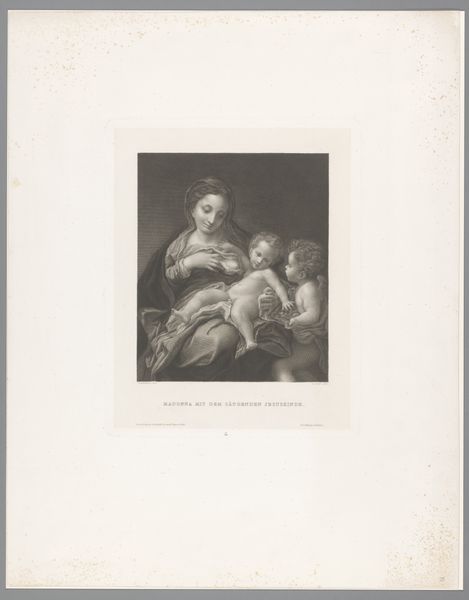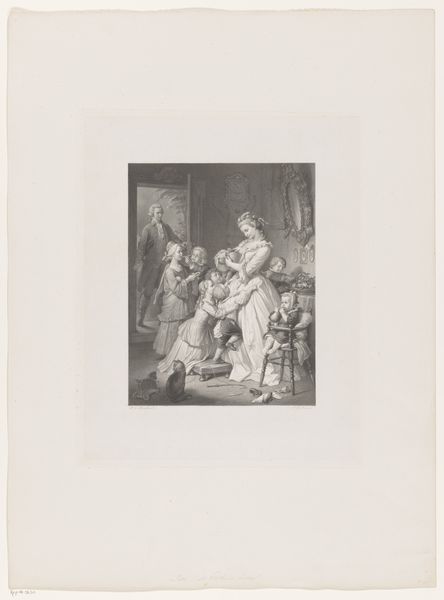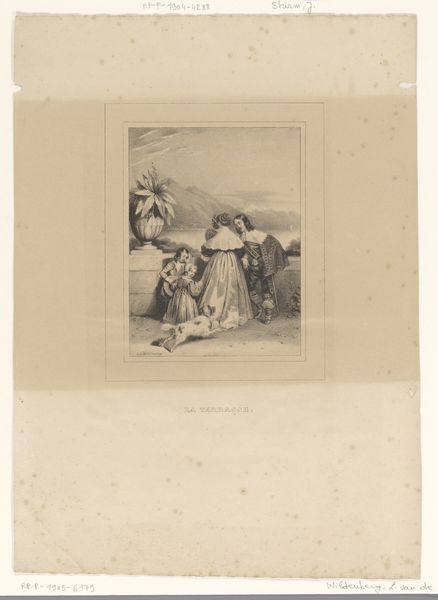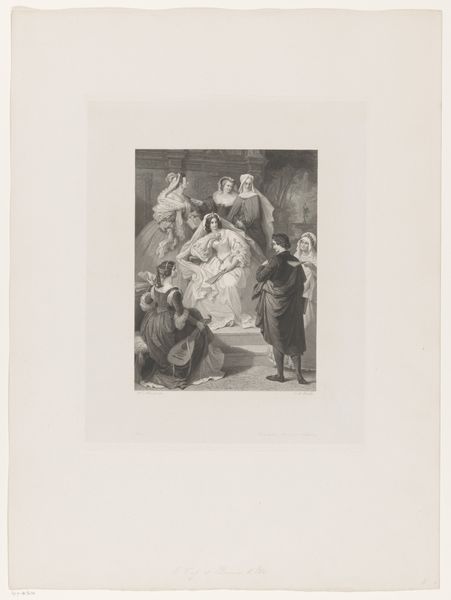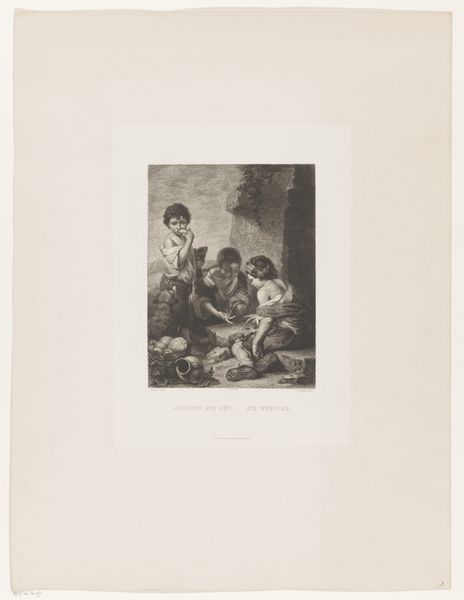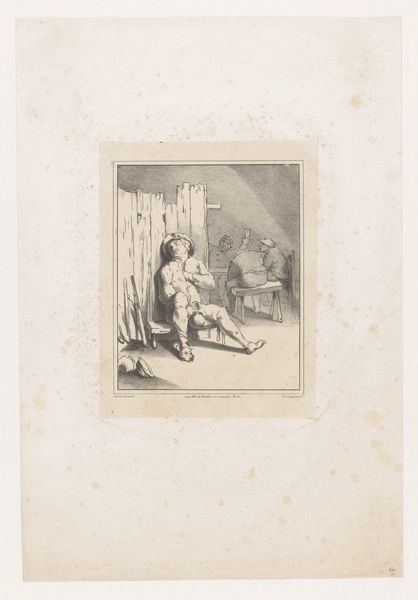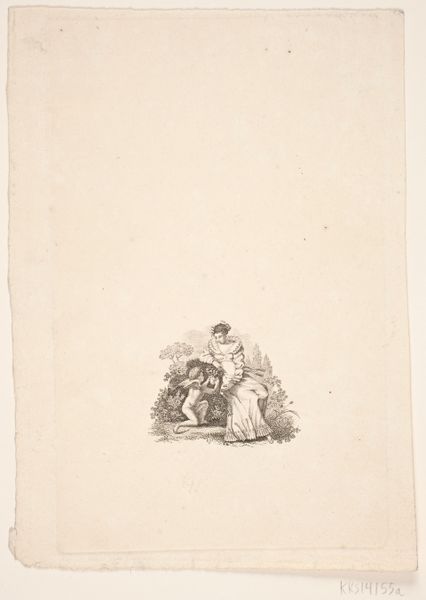
drawing
#
portrait
#
drawing
#
caricature
#
group-portraits
#
romanticism
#
history-painting
Dimensions: height 318 mm, width 233 mm
Copyright: Rijks Museum: Open Domain
Curator: Here we have Cyprien Charles Marie Nicolas Gaulon's "Caricature of an Old Woman in Front of the Mirror," created in 1824. The work provides an interesting perspective, both literally and figuratively, on societal expectations and aging. Editor: Woah, what a mood! It's making me feel all sorts of complicated things. Is it satire? Tragedy? Maybe both with a dash of darkness... it feels so unsettling. Curator: The drawing exemplifies elements of Romanticism, which often explored heightened emotion and the grotesque. It critiques vanity through caricature, a lens through which we might analyze constructions of beauty and power at that time. Editor: So, what do you see happening in the piece? She is staring at a mirror; an almost ghoulish face peers out at her! What’s with the other people around the mirror—all laughing and whispering like mean children? Curator: Yes! I'm seeing a collision of realities, with this elderly woman grappling with her reflection and public perception. Think about the gaze operating here, the pressures imposed particularly on women, as she tries to adorn herself while being watched and mocked. Editor: Exactly. You're making me see it. It is like those fashion magazines where everyone is young and gorgeous, versus that sinking feeling when looking in the mirror…that is the story that the painting shares. Curator: It pushes beyond just individual concerns of aging and gets at those patriarchal systems upholding these constraints. Editor: Art offers a space to consider uncomfortable truths, and there is a timeless message here, wrapped in 19th century humor. This caricature is both brutal and beautiful; and the artist created an enduring narrative about self-image and societal pressures that resonates today. Curator: Absolutely. Gaulon presents not just a comedic scene, but rather, an introspective study of aging, gender, and judgment. The history painting that emerges goes beyond a mere physical likeness; instead, we consider its potential to explore individual and collective identities.
Comments
No comments
Be the first to comment and join the conversation on the ultimate creative platform.
